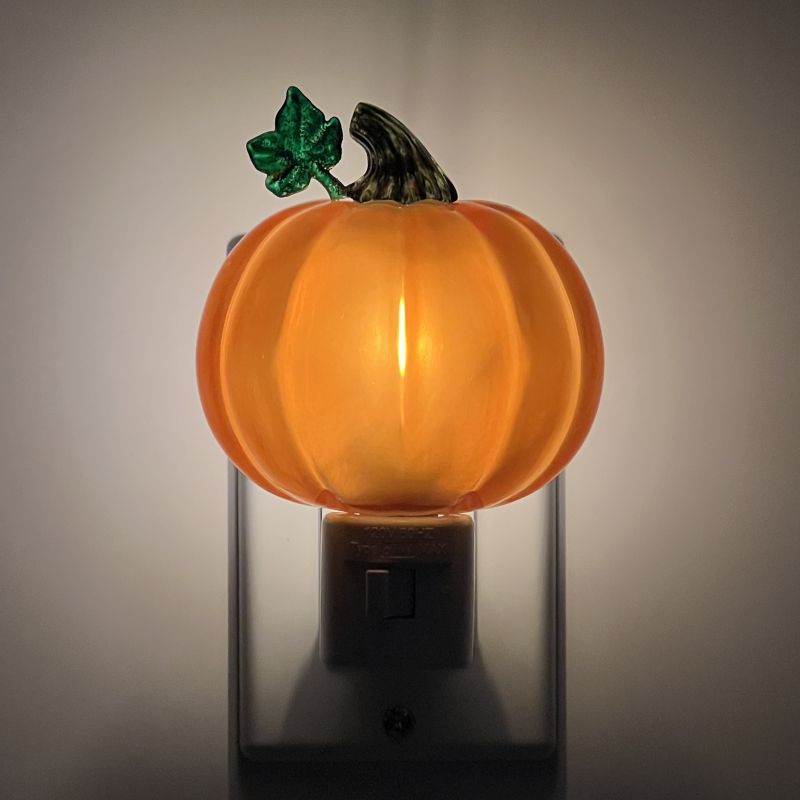What is a Thanksgiving Night Light?
A Thanksgiving Night Light is a specialized decorative lighting product designed specifically for the Thanksgiving season. These lights typically feature warm color temperatures (ranging from 2200K to 2700K to mimic candlelight), autumn-themed designs (such as pumpkins, leaves, or cornucopias), and energy-efficient LED technology (consuming only 0.5W to 2W per bulb). Modern versions often incorporate smart lighting features, with 85% of premium models offering app-controlled color changing capabilities through protocols like Bluetooth 5.0 or Wi-Fi connectivity.

Key Features with Technical Specifications
1. Spectral Characteristics
Thanksgiving lights emit light in the 580-630nm wavelength range (warm white to orange-red spectrum) to create a cozy ambiance. High-quality models achieve a Color Rendering Index (CRI) of ≥90, ensuring accurate color representation of autumn decor. The luminous flux typically ranges from 20-200 lumens per bulb depending on size and application.
2. Material Composition
The housing consists of UL94 V-0 rated flame-retardant ABS plastic (for indoor models) or IP65 waterproof polycarbonate (for outdoor variants). The LED chips are typically 2835 or 5050 SMD types with an average lifespan of 25,000-50,000 hours at 85°C junction temperature.
3. Power Management
Modern Thanksgiving lights utilize constant current drivers with ±5% current regulation to prevent flickering. USB-powered models operate at 5V DC, 0.5-2A, while plug-in versions support 120V AC input with 90%+ conversion efficiency.
4. Thermal Performance
Advanced thermal management ensures the housing temperature remains below 60°C during continuous operation, achieved through 2oz copper PCB substrates and aluminum heat sinks in premium models.
Application Scenarios
1. Residential Decor
Table Centerpieces: Low-voltage (12V) LED tea lights with flicker effects (1-3Hz modulation) create candle-like ambiance without fire risk
Mantle Displays: RGBW strip lights (60 LEDs/m) with tunable white (2200K-6500K) for seasonal transitions
Window Frames: Silicone-covered strings (IP67 rating) with 8-hour timer functions
2. Commercial Applications
Restaurant Ambiance: Dimmable (0-10V control) pendant lights with amber glass filters
Retail Displays: Track lighting with 25° beam angle spotlights to highlight seasonal merchandise
Hotel Lobbies: Architectural lighting with DMX512 control for synchronized color shows
3. Outdoor Installations
Path Lighting: Solar-powered (3.7V 18650 batteries) stake lights with 10 lux illumination
Tree Wrapping: Commercial-grade (24V system) strings with 12mm bulb spacing
Facade Lighting: Weatherproof (-40°C to 60°C operating range) projection systems
Maintenance Procedures
1. Cleaning Protocol
For plastic housings, use a microfiber cloth with 70% isopropyl alcohol solution (applied sparingly). Glass components require ammonia-free cleaners and soft brushes to remove debris from textured surfaces. Outdoor fixtures should be cleaned bi-weekly during peak season to maintain 95%+ light transmission.
2. Electrical Maintenance
Inspect plugs and connectors for ≥0.5mm contact spacing
Measure voltage drop with a multimeter (should not exceed 10% of nominal voltage)
Check for >1MΩ insulation resistance between conductors
3. Storage Recommendations
Coil lights loosely (>10cm diameter) to prevent conductor fatigue. Store in 40-60% RH environments with silica gel packets to prevent moisture damage. Use anti-static bags for smart lighting components to protect ESD-sensitive ICs.
4. Component Replacement
When individual LEDs fail (typically showing >20% lumen depreciation), replace using ESD-safe soldering equipment at 300°C maximum tip temperature. For driver failures, match replacement units by output current (±5%) and PWM frequency (>200Hz) specifications.







